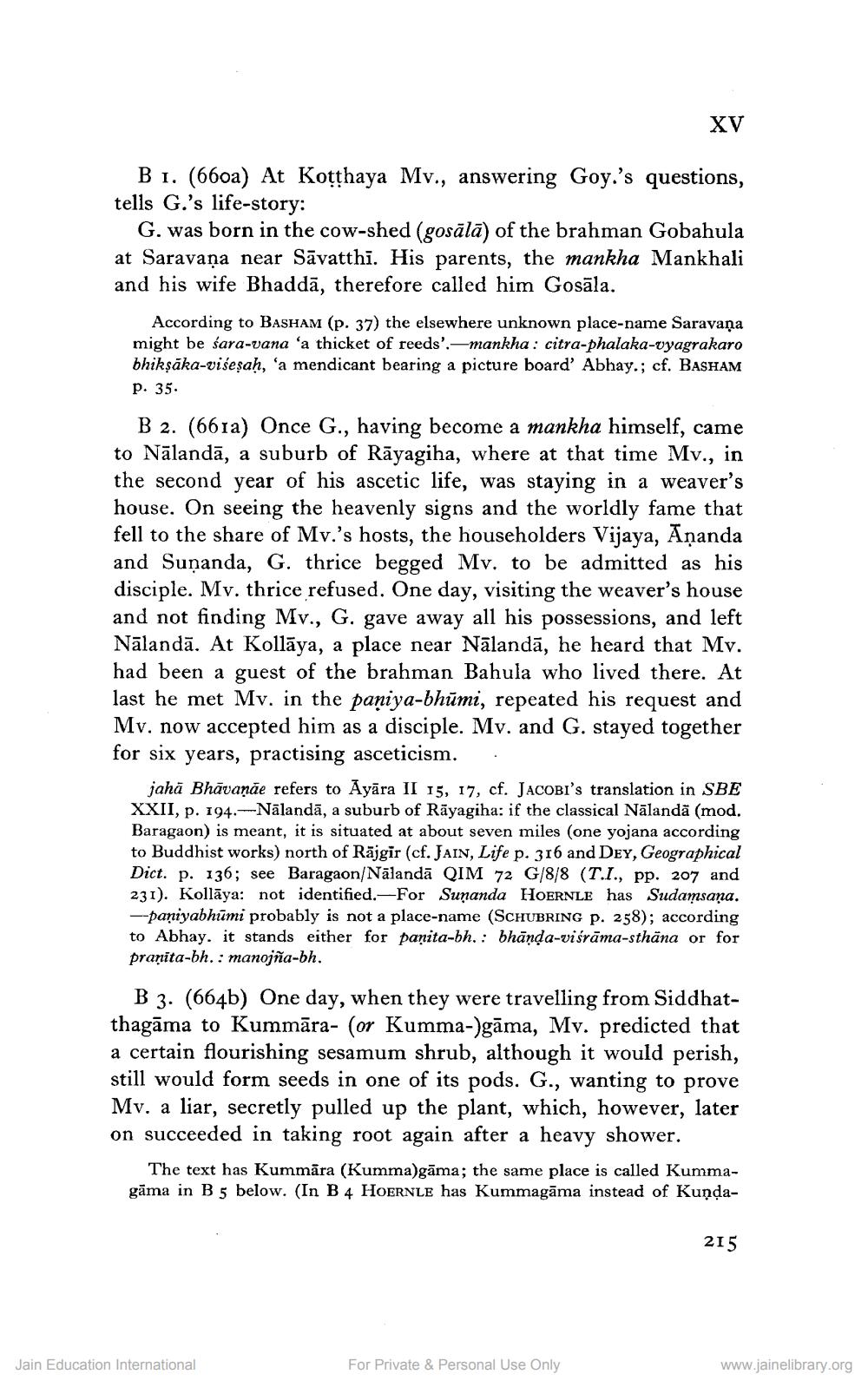________________
XV
B 1. (660a) At Kotthaya Mv., answering Goy.'s questions, tells G.'s life-story:
G. was born in the cow-shed (gosālā) of the brahman Gobahula at Saravaņa near Sāvatthi. His parents, the mankha Mankhali and his wife Bhaddā, therefore called him Gosāla.
According to BASHAM (p. 37) the elsewhere unknown place-name Saravaņa might be sara-vana 'a thicket of reeds'. - mankha: citra-phalaka-vyagrakaro bhikṣāka-visesah, 'a mendicant bearing a picture board' Abhay.; cf. BASHAM p. 35
B 2. (661a) Once G., having become a mankha himself, came to Nālandā, a suburb of Rāyagiha, where at that time Mv., in the second year of his ascetic life, was staying in a weaver's house. On seeing the heavenly signs and the worldly fame that fell to the share of Mv.'s hosts, the householders Vijaya, Ananda and Suņanda, G. thrice begged Mv. to be admitted as his disciple. Mv. thrice refused. One day, visiting the weaver's house and not finding Mv., G. gave away all his possessions, and left Nālandā. At Kollāva, a place near Nālandā, he heard that My. had been a guest of the brahman Bahula who lived there. At last he met Mv. in the paniya-bhūmi, repeated his request and Mv. now accepted him as a disciple. Mv. and G. stayed together for six years, practising asceticism. .
jahā Bhāvaņāe refers to Ayāra II 15, 17, cf. JACOBI's translation in SBE XXII, p. 194.-Nālandā, a suburb of Rāyagiha: if the classical Nālandă (mod. Baragaon) is meant, it is situated at about seven miles (one yojana according to Buddhist works) north of Rājgir (cf. JAIN, Life p. 316 and Dey, Geographical Dict. p. 136; see Baragaon/Nālandā QIM 72 G/8/8 (T..., pp. 207 and 231). Kollāya: not identified. -For Sunanda HOERNLE has Sudamsaņa. --paniyabhūmi probably is not a place-name (SCHUBRING P. 258); according to Abhay. it stands either for paņita-bh. : bhānda-viśrāma-sthäna or for pranita-bh.: manojña-bh.
B 3. (664b) One day, when they were travelling from Siddhatthagāma to Kummāra- (or Kumma-)gāma, Mv. predicted that a certain flourishing sesamum shrub, although it would perish, still would form seeds in one of its pods. G., wanting to prove Mv. a liar, secretly pulled up the plant, which, however, later on succeeded in taking root again after a heavy shower.
The text has Kummāra (Kumma)gāma; the same place is called Kummagāma in B 5 below. (In B 4 HOERNLE has Kummagāma instead of Kunda
215
Jain Education International
For Private & Personal Use Only
www.jainelibrary.org




